Here are eight spine surgeons discussing the most important areas for spine research in the future. Ask Spine Surgeons is a weekly series of questions posed to spine surgeons around the country about clinical, business and policy issues affecting spine care. We invite all spine surgeon and specialist responses. Next week's question: What are your goals as a spine surgeon for 2013?
Please send responses to Laura Miller at lmiller@beckershealthcare.com by Thursday, Dec. 27, at 5 p.m. CST.
 Neel Anand, MD, Director of Spine Trauma, Minimally Invasive Spine Surgery, Cedars-Sinai Spine Center, Los Angeles: At the end of the day, its is going to be data-driven outcomes and quality of life measures that drive research. What is actually improving outcomes and patients' quality of life is the main question in my mind. All clinical research will have to move toward that. It doesn't matter what techniques and technology come out if they don't improve the quality of life for patients. In those terms, I think there will be more research in minimally invasive techniques and technology. This will also include research into enabling technologies like navigational equipment, virtual surgeries and robotic surgeries that make minimally invasive surgery a reality.
Neel Anand, MD, Director of Spine Trauma, Minimally Invasive Spine Surgery, Cedars-Sinai Spine Center, Los Angeles: At the end of the day, its is going to be data-driven outcomes and quality of life measures that drive research. What is actually improving outcomes and patients' quality of life is the main question in my mind. All clinical research will have to move toward that. It doesn't matter what techniques and technology come out if they don't improve the quality of life for patients. In those terms, I think there will be more research in minimally invasive techniques and technology. This will also include research into enabling technologies like navigational equipment, virtual surgeries and robotic surgeries that make minimally invasive surgery a reality.
Then you have biological and biomechanical research. Stem cells are very attractive to enhance bone healing as well as spinal fusion. There is considerable research also being done on regenerative technologies using stem cells, with a particular view to regenerating discs. We aren't close to that now, but that's the direction where research is headed. That's of tremendous social interest. On the flip side, we may have simple injectable technology that provides for fusions without doing major surgery. That's where biologic research is proceeding.
Cost is a major factor in that; healthcare costs are going to determine everything in the future. There will be some focus on cost studies, but that's complicated because there are so many factors in assessing costs to hospitals, surgeons and equipment companies that in terms of actually assessing the cost, many years will have gone by with surgeons using the product. Now costs are at the forefront of the research. It will really come down to insurance companies having an open eye to new research and seeing the potential for new things.
If insurance companies deny coverage, there won't be anything new coming in for that procedure. Even if you have good research with a potentially good product, it's difficult to bring it to the market. Then we are going to lose it to the European and Latin American market because it is less onerous to get these technologies there. It's a constant battle to bring new technologies to the market. Once we pass safety and effectiveness in the pilot trial, there should be a way to introduce the technology to the market and have insurance companies reimburse for it at some level.
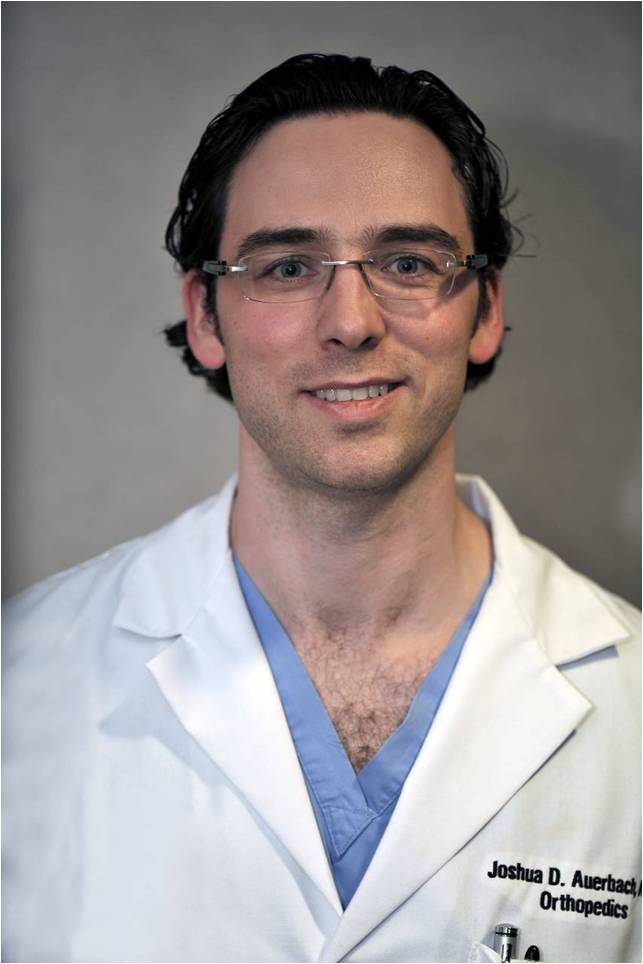 Joshua Auerbach, MD, Chief of Spine Surgery, Bronx Lebanon Hospital Center, New York City: In our dramatically changing reimbursement landscape, ensuring the availability of ample, high-quality comparative effectiveness data to support the routine use of spinal procedures we perform is critical. Failure to provide high-level evidence to support surgical intervention potentially jeopardizes payor coverage as many of us have seen with increasing frequency, and may limit patients' access to these proven interventions. The challenge for us all will be to continue to be surgeon innovators and make progress in the delivery of care to our patients, while protecting patient access to our everyday procedures, which now more than ever, requires peer-reviewed data and cost-effectiveness consideration to support continued resource allocation.
Joshua Auerbach, MD, Chief of Spine Surgery, Bronx Lebanon Hospital Center, New York City: In our dramatically changing reimbursement landscape, ensuring the availability of ample, high-quality comparative effectiveness data to support the routine use of spinal procedures we perform is critical. Failure to provide high-level evidence to support surgical intervention potentially jeopardizes payor coverage as many of us have seen with increasing frequency, and may limit patients' access to these proven interventions. The challenge for us all will be to continue to be surgeon innovators and make progress in the delivery of care to our patients, while protecting patient access to our everyday procedures, which now more than ever, requires peer-reviewed data and cost-effectiveness consideration to support continued resource allocation.
Kaveh Khajavi, MD, Spine Surgeon, Georgia Spine & Neurosurgery Center: Perhaps one of the greatest misconceptions about research is that only those at academic institutions are qualified or have enough resources to make a meaningful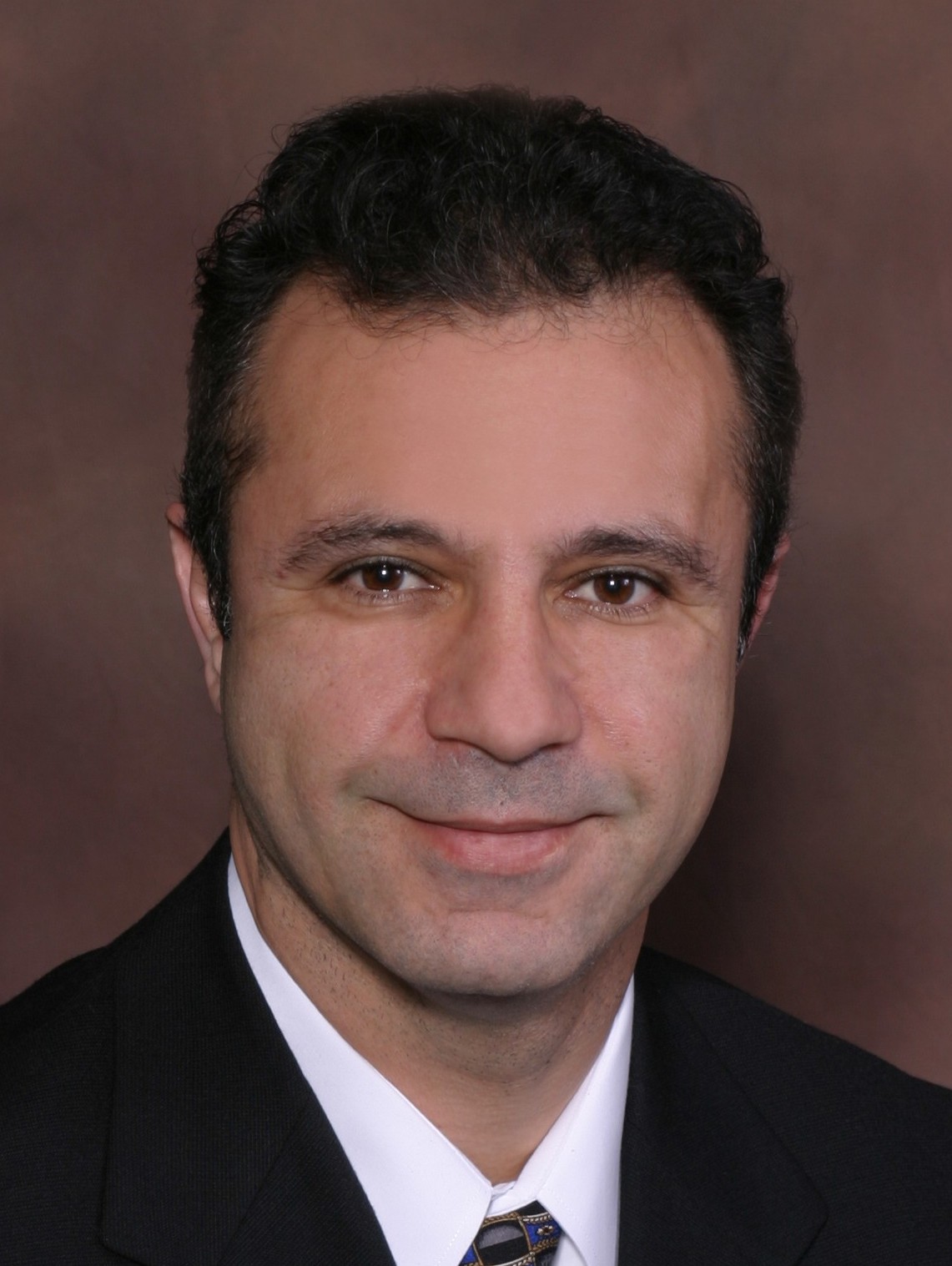 contribution, and that is far from the truth. Spine surgeons, especially those in private practice, need to understand that all research begins with data collection, and any physician can participate in that process by creating a registry for their patients. It takes some extra work at the beginning to set up the system, but after that, it's really about making the commitment to collect the appropriate information on every patient, every time.
contribution, and that is far from the truth. Spine surgeons, especially those in private practice, need to understand that all research begins with data collection, and any physician can participate in that process by creating a registry for their patients. It takes some extra work at the beginning to set up the system, but after that, it's really about making the commitment to collect the appropriate information on every patient, every time.
Ezriel Kornel, MD, Spine Surgeon, Brain & Spine Surgeons of New York: The areas of greatest focus for spine research over the next several years revolve around disc replacements and facet joint replacements. The question of the long-term value of artificial disc replacement with the current devices, both in the lumbar and cervical spine, has not been determined fully yet. How these devices will hold up over 20 to 30 years, and longer in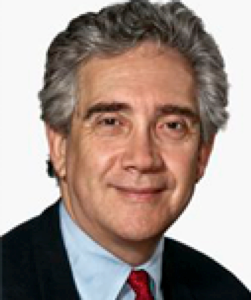 some cases, has not been fully established. Furthermore, it is still unclear as to whether performing a disc arthroplasty rather than a fusion will provide long term benefit in protecting from adjacent segment deterioration.
some cases, has not been fully established. Furthermore, it is still unclear as to whether performing a disc arthroplasty rather than a fusion will provide long term benefit in protecting from adjacent segment deterioration.
These may become largely mute issues if biological disc replacements such as stem cell implants can be fully developed. In addition to biologicals, synthetic discs may be created that function far better than mechanical artificial discs that currently exist.
Furthermore, the important issue of degenerative facet disease has been primarily address as a "destructive" procedure. Research is proceeding now in the creation of artificial facet joints. Disc arthroplasty in combination of facet arthroplasty could go a long way in mechanically truly reconstructing the spine.
Studying the genetics of degenerative disc disease may lead to the ability to provide genetic modification in the early stages of degenerative disc disease, along with modification in individual biomechanics, that may arrest the progress of this disorder.
Finally and perhaps most importantly, biomechanical studies of humans, beginning in childhood, may be able to demonstrate that better body mechanics may have a significant impact in reducing degenerative spine disease. Optimal biomechanics can then be taught in schools in physical education classes beginning at an early age.
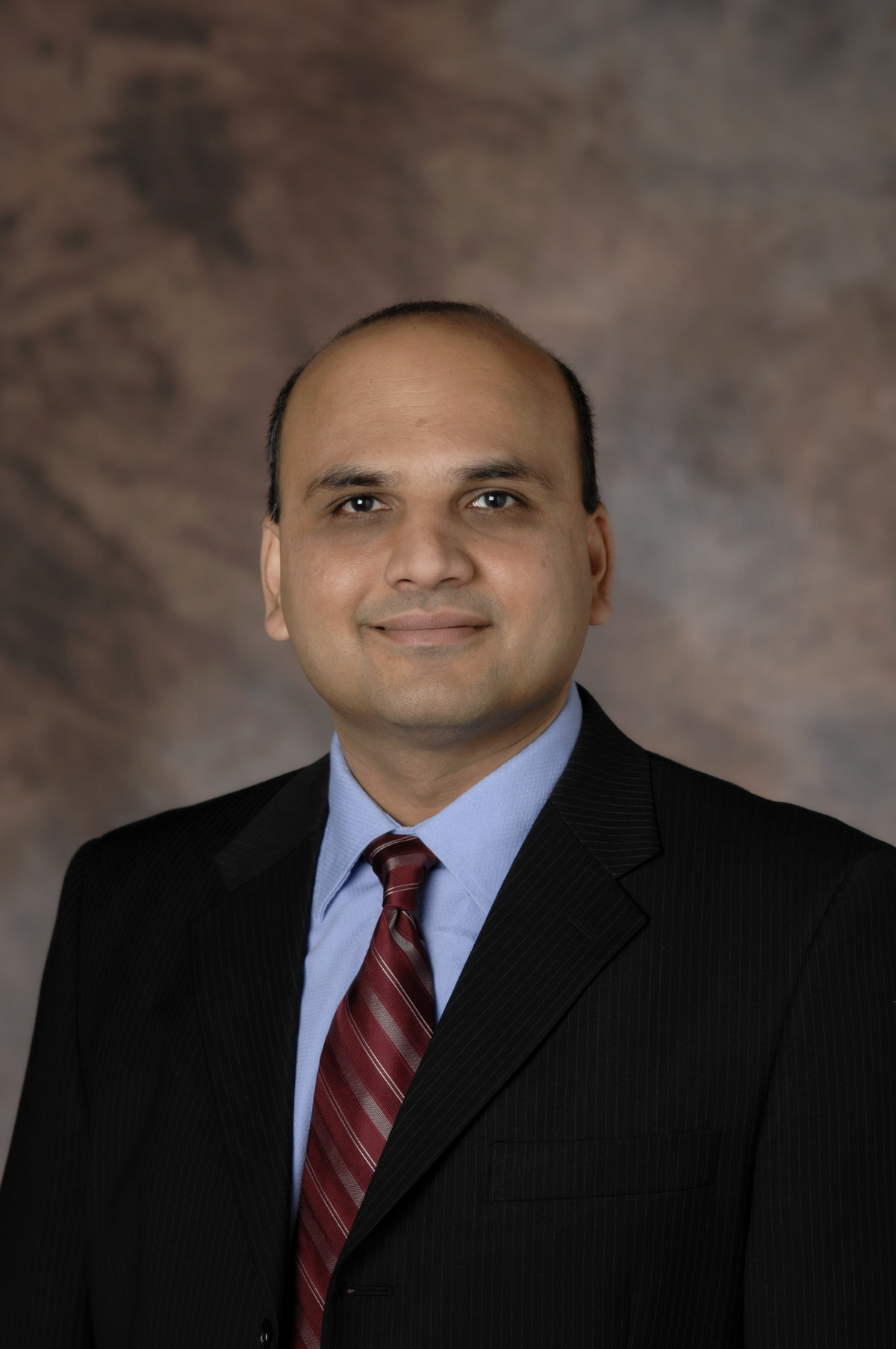 Chetan K. Patel, MD, Orthopedic Spine Surgeon at Florida Hospital Altamonte, Section Chairman for Navigation and Robotics, NASS, Medical Director, Spine Health Institute: From a patient perspective, which is how I think about most important research, it would be something in diagnostics. As a spine surgeon, I'm used to research efforts whether they are implants or new surgical techniques, but what we need to do a better job with is addressing the fundamental issues; some patients have very technically good surgeries but they don't have good outcomes.
Chetan K. Patel, MD, Orthopedic Spine Surgeon at Florida Hospital Altamonte, Section Chairman for Navigation and Robotics, NASS, Medical Director, Spine Health Institute: From a patient perspective, which is how I think about most important research, it would be something in diagnostics. As a spine surgeon, I'm used to research efforts whether they are implants or new surgical techniques, but what we need to do a better job with is addressing the fundamental issues; some patients have very technically good surgeries but they don't have good outcomes.
There are also patients with pain in their backs who aren't surgical candidates because we don't truly understand where the pain is coming from. Back pain is common in the United States and sometimes even after a lot of treatments and testing we don't understand exactly where it's coming from. There are issues we sometimes see on CAT scans or MRI that aren't necessarily causing the pain. There are a lot of different levels, depending on what the spine looks like. We have to differentiate the normal aging spine that is painless from a painful condition that needs to be treated. If we could better diagnose where pain is coming from, we could more precisely help people with their problems.
There is also a lot of basic science research on how discs regenerate. The fundamental research is going to try to understand back pain. I don't see anything right around the corner that will be the next big thing. This is a big gaping hole in our armamentarium that exists. It's something we know and understand as a community of spine practitioners and we are paying more attention to the basic science in spine to try to understand things better.
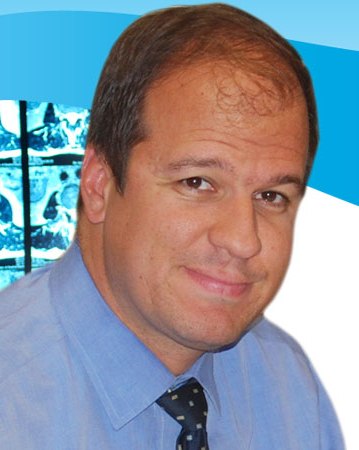 Thomas Roush, MD, Founder, Roush Spine, Lake Worth, Fla.: In this era where a premium is placed on evidence-based medical and surgical treatment, it is important for spine surgeons to actively engage not only in research but also its interpretation and application. There is no question that Level-1 evidence through randomized, prospective clinical trials remains the gold standard in research and should be attained whenever possible.
Thomas Roush, MD, Founder, Roush Spine, Lake Worth, Fla.: In this era where a premium is placed on evidence-based medical and surgical treatment, it is important for spine surgeons to actively engage not only in research but also its interpretation and application. There is no question that Level-1 evidence through randomized, prospective clinical trials remains the gold standard in research and should be attained whenever possible.
The extraordinary time, expense and resource allocation associated with such studies, however, makes them difficult to obtain. This reality should not pose an impediment to spine surgeon research involvement, as valuable information can be gathered through lesser levels of evidence. In fact, lesser levels of evidence studies are the foundation upon which future Level-1 studies are built. Of particular concern to me is the misuse and mischaracterization which occurs when spine research studies are left for interpretation by non-spine surgeons. The bias introduced when non-spine surgeons are involved often taints the conclusions of the studies and leads to misapplication of the true meaning of the study results.
Most often, overgeneralizations are made outside of the actual scope of the hypothesis and conclusion in favor of the bias of the interpreting non-spine surgeon. This in turn leads to negative impact on health policy and patient care. I believe that we as spine surgeons have an obligation to conduct and interpret meaningful clinical and basic science studies to the benefit of our patients, as we have been increasingly subject to the negative ramifications of the interpretation by those less qualified.
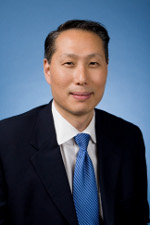 Jeffrey Wang, MD, UCLA Spine Center: I believe that we need to continue to strive to perform appropriate basic science research in order to address the root of spinal problems at a basic level. Although this is typically longer-term, exploratory research will be critical for the future. What each spine surgeon can do right now in their practice is to try to gather evidence on the treatments we are currently providing, in order to show what works and what does not work. Properly performed clinical outcomes research to find true results of our surgeries will be critical in the future to justify what we are doing and to eliminate what does not work. Evidence in the form of prospective clinical outcomes research can be done right now by every surgeon in practice.
Jeffrey Wang, MD, UCLA Spine Center: I believe that we need to continue to strive to perform appropriate basic science research in order to address the root of spinal problems at a basic level. Although this is typically longer-term, exploratory research will be critical for the future. What each spine surgeon can do right now in their practice is to try to gather evidence on the treatments we are currently providing, in order to show what works and what does not work. Properly performed clinical outcomes research to find true results of our surgeries will be critical in the future to justify what we are doing and to eliminate what does not work. Evidence in the form of prospective clinical outcomes research can be done right now by every surgeon in practice.
Robert G. Watkins IV, MD, co-director of Marina Spine Center at Marina Del Rey Hospital (Calif.): The most important area of research for future spine development is disc regeneration. Current spine treatment, including surgery,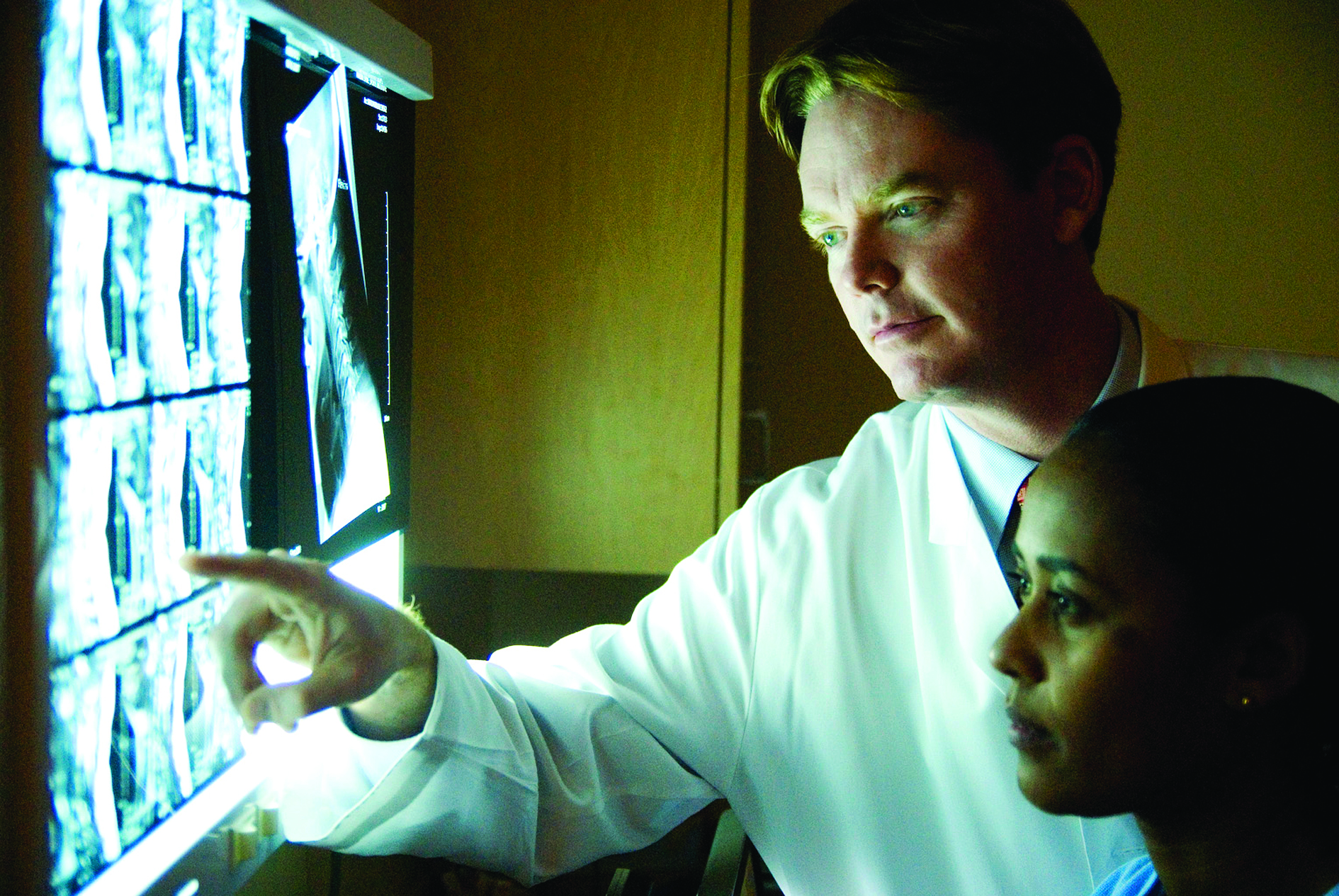 addresses pathology that is often beyond the point of natural repair. Surgery removes pathologic tissue or stabilizes an unstable segment. Surgery does not cure the underlying pathology of degeneration. It merely addresses the current crisis on a temporary basis. For example, if a disc herniation is removed then the patient can feel pain relief, but the degeneration of the disc continues and may present with more problems down the road.
addresses pathology that is often beyond the point of natural repair. Surgery removes pathologic tissue or stabilizes an unstable segment. Surgery does not cure the underlying pathology of degeneration. It merely addresses the current crisis on a temporary basis. For example, if a disc herniation is removed then the patient can feel pain relief, but the degeneration of the disc continues and may present with more problems down the road.
Another example is, after a fusion the patient may develop progressive generation of an adjacent level that may require surgical intervention. Therefore current spinal surgery is essentially pain management. Surgery can temporarily fix the patients acute crisis but it cannot guarantee long-term success, because the degenerative process is continuing to occur in the patient.
The next great advancement in spinal care will be the regeneration of the intravertebral disc and facet joints. Unfortunately there are many complex issues making this a difficult problem to solve. The intervertebral disc is a hypoxic, avascular, acidic, and complex structure that is difficult to treat with regenerative therapy. Furthermore when a disc has degenerated it can develop mechanical instability and bony erosions that a regenerative treatment will be difficult to address.
Spinal degeneration is a problem that affects many people all over the world resulting in much pain and suffering and loss of productivity. There is an enormous amount of time, money, and energy invested in spinal regeneration, therefore a solution will be discovered. How long it will take to find a solution is unknown, my best estimate is at least 10 to 20 years.
More Articles on Spinal Surgery:
6 Tips to Overcome Payor Concerns With Spine Surgery in ASCs
Challenges & Opportunities in EMR Integration for Spine Practices: Q&A With BASIC Spine
5 Ways Independent Spine Surgeons Contribute to Spinal Research
Please send responses to Laura Miller at lmiller@beckershealthcare.com by Thursday, Dec. 27, at 5 p.m. CST.
 Neel Anand, MD, Director of Spine Trauma, Minimally Invasive Spine Surgery, Cedars-Sinai Spine Center, Los Angeles: At the end of the day, its is going to be data-driven outcomes and quality of life measures that drive research. What is actually improving outcomes and patients' quality of life is the main question in my mind. All clinical research will have to move toward that. It doesn't matter what techniques and technology come out if they don't improve the quality of life for patients. In those terms, I think there will be more research in minimally invasive techniques and technology. This will also include research into enabling technologies like navigational equipment, virtual surgeries and robotic surgeries that make minimally invasive surgery a reality.
Neel Anand, MD, Director of Spine Trauma, Minimally Invasive Spine Surgery, Cedars-Sinai Spine Center, Los Angeles: At the end of the day, its is going to be data-driven outcomes and quality of life measures that drive research. What is actually improving outcomes and patients' quality of life is the main question in my mind. All clinical research will have to move toward that. It doesn't matter what techniques and technology come out if they don't improve the quality of life for patients. In those terms, I think there will be more research in minimally invasive techniques and technology. This will also include research into enabling technologies like navigational equipment, virtual surgeries and robotic surgeries that make minimally invasive surgery a reality.Then you have biological and biomechanical research. Stem cells are very attractive to enhance bone healing as well as spinal fusion. There is considerable research also being done on regenerative technologies using stem cells, with a particular view to regenerating discs. We aren't close to that now, but that's the direction where research is headed. That's of tremendous social interest. On the flip side, we may have simple injectable technology that provides for fusions without doing major surgery. That's where biologic research is proceeding.
Cost is a major factor in that; healthcare costs are going to determine everything in the future. There will be some focus on cost studies, but that's complicated because there are so many factors in assessing costs to hospitals, surgeons and equipment companies that in terms of actually assessing the cost, many years will have gone by with surgeons using the product. Now costs are at the forefront of the research. It will really come down to insurance companies having an open eye to new research and seeing the potential for new things.
If insurance companies deny coverage, there won't be anything new coming in for that procedure. Even if you have good research with a potentially good product, it's difficult to bring it to the market. Then we are going to lose it to the European and Latin American market because it is less onerous to get these technologies there. It's a constant battle to bring new technologies to the market. Once we pass safety and effectiveness in the pilot trial, there should be a way to introduce the technology to the market and have insurance companies reimburse for it at some level.
 Joshua Auerbach, MD, Chief of Spine Surgery, Bronx Lebanon Hospital Center, New York City: In our dramatically changing reimbursement landscape, ensuring the availability of ample, high-quality comparative effectiveness data to support the routine use of spinal procedures we perform is critical. Failure to provide high-level evidence to support surgical intervention potentially jeopardizes payor coverage as many of us have seen with increasing frequency, and may limit patients' access to these proven interventions. The challenge for us all will be to continue to be surgeon innovators and make progress in the delivery of care to our patients, while protecting patient access to our everyday procedures, which now more than ever, requires peer-reviewed data and cost-effectiveness consideration to support continued resource allocation.
Joshua Auerbach, MD, Chief of Spine Surgery, Bronx Lebanon Hospital Center, New York City: In our dramatically changing reimbursement landscape, ensuring the availability of ample, high-quality comparative effectiveness data to support the routine use of spinal procedures we perform is critical. Failure to provide high-level evidence to support surgical intervention potentially jeopardizes payor coverage as many of us have seen with increasing frequency, and may limit patients' access to these proven interventions. The challenge for us all will be to continue to be surgeon innovators and make progress in the delivery of care to our patients, while protecting patient access to our everyday procedures, which now more than ever, requires peer-reviewed data and cost-effectiveness consideration to support continued resource allocation.Kaveh Khajavi, MD, Spine Surgeon, Georgia Spine & Neurosurgery Center: Perhaps one of the greatest misconceptions about research is that only those at academic institutions are qualified or have enough resources to make a meaningful
 contribution, and that is far from the truth. Spine surgeons, especially those in private practice, need to understand that all research begins with data collection, and any physician can participate in that process by creating a registry for their patients. It takes some extra work at the beginning to set up the system, but after that, it's really about making the commitment to collect the appropriate information on every patient, every time.
contribution, and that is far from the truth. Spine surgeons, especially those in private practice, need to understand that all research begins with data collection, and any physician can participate in that process by creating a registry for their patients. It takes some extra work at the beginning to set up the system, but after that, it's really about making the commitment to collect the appropriate information on every patient, every time.Ezriel Kornel, MD, Spine Surgeon, Brain & Spine Surgeons of New York: The areas of greatest focus for spine research over the next several years revolve around disc replacements and facet joint replacements. The question of the long-term value of artificial disc replacement with the current devices, both in the lumbar and cervical spine, has not been determined fully yet. How these devices will hold up over 20 to 30 years, and longer in
 some cases, has not been fully established. Furthermore, it is still unclear as to whether performing a disc arthroplasty rather than a fusion will provide long term benefit in protecting from adjacent segment deterioration.
some cases, has not been fully established. Furthermore, it is still unclear as to whether performing a disc arthroplasty rather than a fusion will provide long term benefit in protecting from adjacent segment deterioration. These may become largely mute issues if biological disc replacements such as stem cell implants can be fully developed. In addition to biologicals, synthetic discs may be created that function far better than mechanical artificial discs that currently exist.
Furthermore, the important issue of degenerative facet disease has been primarily address as a "destructive" procedure. Research is proceeding now in the creation of artificial facet joints. Disc arthroplasty in combination of facet arthroplasty could go a long way in mechanically truly reconstructing the spine.
Studying the genetics of degenerative disc disease may lead to the ability to provide genetic modification in the early stages of degenerative disc disease, along with modification in individual biomechanics, that may arrest the progress of this disorder.
Finally and perhaps most importantly, biomechanical studies of humans, beginning in childhood, may be able to demonstrate that better body mechanics may have a significant impact in reducing degenerative spine disease. Optimal biomechanics can then be taught in schools in physical education classes beginning at an early age.
 Chetan K. Patel, MD, Orthopedic Spine Surgeon at Florida Hospital Altamonte, Section Chairman for Navigation and Robotics, NASS, Medical Director, Spine Health Institute: From a patient perspective, which is how I think about most important research, it would be something in diagnostics. As a spine surgeon, I'm used to research efforts whether they are implants or new surgical techniques, but what we need to do a better job with is addressing the fundamental issues; some patients have very technically good surgeries but they don't have good outcomes.
Chetan K. Patel, MD, Orthopedic Spine Surgeon at Florida Hospital Altamonte, Section Chairman for Navigation and Robotics, NASS, Medical Director, Spine Health Institute: From a patient perspective, which is how I think about most important research, it would be something in diagnostics. As a spine surgeon, I'm used to research efforts whether they are implants or new surgical techniques, but what we need to do a better job with is addressing the fundamental issues; some patients have very technically good surgeries but they don't have good outcomes. There are also patients with pain in their backs who aren't surgical candidates because we don't truly understand where the pain is coming from. Back pain is common in the United States and sometimes even after a lot of treatments and testing we don't understand exactly where it's coming from. There are issues we sometimes see on CAT scans or MRI that aren't necessarily causing the pain. There are a lot of different levels, depending on what the spine looks like. We have to differentiate the normal aging spine that is painless from a painful condition that needs to be treated. If we could better diagnose where pain is coming from, we could more precisely help people with their problems.
There is also a lot of basic science research on how discs regenerate. The fundamental research is going to try to understand back pain. I don't see anything right around the corner that will be the next big thing. This is a big gaping hole in our armamentarium that exists. It's something we know and understand as a community of spine practitioners and we are paying more attention to the basic science in spine to try to understand things better.
 Thomas Roush, MD, Founder, Roush Spine, Lake Worth, Fla.: In this era where a premium is placed on evidence-based medical and surgical treatment, it is important for spine surgeons to actively engage not only in research but also its interpretation and application. There is no question that Level-1 evidence through randomized, prospective clinical trials remains the gold standard in research and should be attained whenever possible.
Thomas Roush, MD, Founder, Roush Spine, Lake Worth, Fla.: In this era where a premium is placed on evidence-based medical and surgical treatment, it is important for spine surgeons to actively engage not only in research but also its interpretation and application. There is no question that Level-1 evidence through randomized, prospective clinical trials remains the gold standard in research and should be attained whenever possible. The extraordinary time, expense and resource allocation associated with such studies, however, makes them difficult to obtain. This reality should not pose an impediment to spine surgeon research involvement, as valuable information can be gathered through lesser levels of evidence. In fact, lesser levels of evidence studies are the foundation upon which future Level-1 studies are built. Of particular concern to me is the misuse and mischaracterization which occurs when spine research studies are left for interpretation by non-spine surgeons. The bias introduced when non-spine surgeons are involved often taints the conclusions of the studies and leads to misapplication of the true meaning of the study results.
Most often, overgeneralizations are made outside of the actual scope of the hypothesis and conclusion in favor of the bias of the interpreting non-spine surgeon. This in turn leads to negative impact on health policy and patient care. I believe that we as spine surgeons have an obligation to conduct and interpret meaningful clinical and basic science studies to the benefit of our patients, as we have been increasingly subject to the negative ramifications of the interpretation by those less qualified.
 Jeffrey Wang, MD, UCLA Spine Center: I believe that we need to continue to strive to perform appropriate basic science research in order to address the root of spinal problems at a basic level. Although this is typically longer-term, exploratory research will be critical for the future. What each spine surgeon can do right now in their practice is to try to gather evidence on the treatments we are currently providing, in order to show what works and what does not work. Properly performed clinical outcomes research to find true results of our surgeries will be critical in the future to justify what we are doing and to eliminate what does not work. Evidence in the form of prospective clinical outcomes research can be done right now by every surgeon in practice.
Jeffrey Wang, MD, UCLA Spine Center: I believe that we need to continue to strive to perform appropriate basic science research in order to address the root of spinal problems at a basic level. Although this is typically longer-term, exploratory research will be critical for the future. What each spine surgeon can do right now in their practice is to try to gather evidence on the treatments we are currently providing, in order to show what works and what does not work. Properly performed clinical outcomes research to find true results of our surgeries will be critical in the future to justify what we are doing and to eliminate what does not work. Evidence in the form of prospective clinical outcomes research can be done right now by every surgeon in practice.Robert G. Watkins IV, MD, co-director of Marina Spine Center at Marina Del Rey Hospital (Calif.): The most important area of research for future spine development is disc regeneration. Current spine treatment, including surgery,
 addresses pathology that is often beyond the point of natural repair. Surgery removes pathologic tissue or stabilizes an unstable segment. Surgery does not cure the underlying pathology of degeneration. It merely addresses the current crisis on a temporary basis. For example, if a disc herniation is removed then the patient can feel pain relief, but the degeneration of the disc continues and may present with more problems down the road.
addresses pathology that is often beyond the point of natural repair. Surgery removes pathologic tissue or stabilizes an unstable segment. Surgery does not cure the underlying pathology of degeneration. It merely addresses the current crisis on a temporary basis. For example, if a disc herniation is removed then the patient can feel pain relief, but the degeneration of the disc continues and may present with more problems down the road.Another example is, after a fusion the patient may develop progressive generation of an adjacent level that may require surgical intervention. Therefore current spinal surgery is essentially pain management. Surgery can temporarily fix the patients acute crisis but it cannot guarantee long-term success, because the degenerative process is continuing to occur in the patient.
The next great advancement in spinal care will be the regeneration of the intravertebral disc and facet joints. Unfortunately there are many complex issues making this a difficult problem to solve. The intervertebral disc is a hypoxic, avascular, acidic, and complex structure that is difficult to treat with regenerative therapy. Furthermore when a disc has degenerated it can develop mechanical instability and bony erosions that a regenerative treatment will be difficult to address.
Spinal degeneration is a problem that affects many people all over the world resulting in much pain and suffering and loss of productivity. There is an enormous amount of time, money, and energy invested in spinal regeneration, therefore a solution will be discovered. How long it will take to find a solution is unknown, my best estimate is at least 10 to 20 years.
More Articles on Spinal Surgery:
6 Tips to Overcome Payor Concerns With Spine Surgery in ASCs
Challenges & Opportunities in EMR Integration for Spine Practices: Q&A With BASIC Spine
5 Ways Independent Spine Surgeons Contribute to Spinal Research


